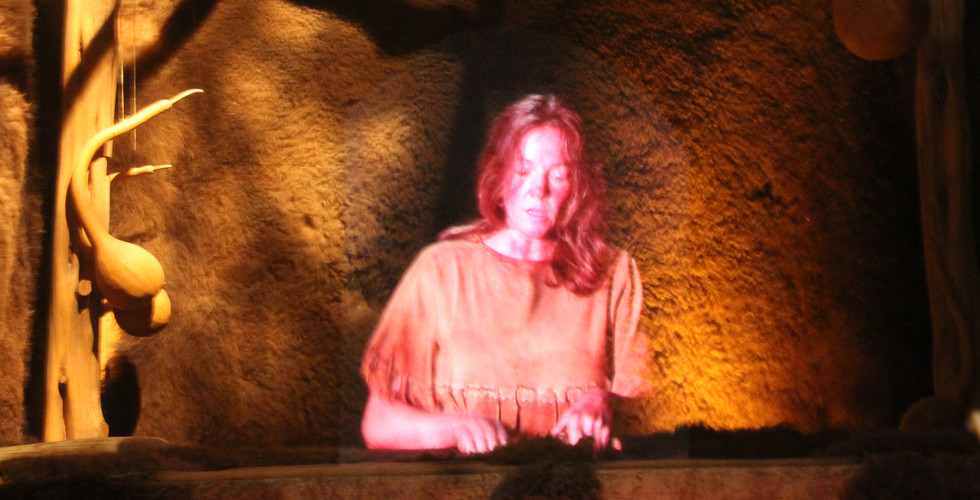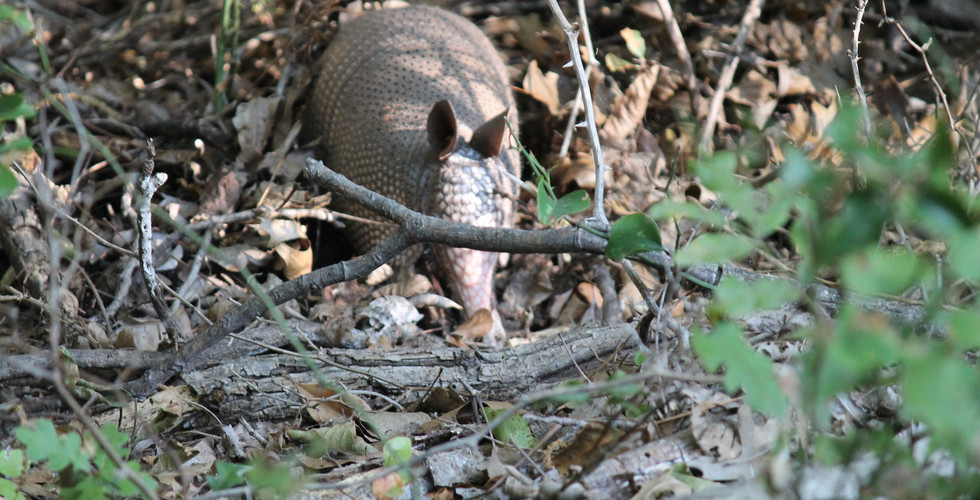
Happy Sunday!
I spent the week in Abilene State Park. I knew the area had history, but like everything else, experiencing is learning.
And the best place to experience and learn about this area is Frontier! Texas. More than a museum, Frontier! Texas is the official visitors center for Abilene and the Texas Fort Trails Region.
It uses state of the art technology, including holographics and a 360 degree theater to really bring visitors in to what it was like in the early days of settlements in West Texas, and even before. Throughout the building, "spirit guides" are waiting to talk about their own experiences and provide a feeling of reality to history.
From Cynthia Ann Parker, a white girl who lived with the Comanches and refused to return to her old life (she was Quanah Parker's mother) to J. Wright Moar, one of the first buffalo hunters around Abilene and on to Britt Johnson the man who started the carriage trade in the area, each of these guides bring the frontier to life. Even Pat Garrett is there, talking about that night in the pitch black house when he shot Billy the Kid, and what happened to him after.

Oh, yeah, they're holograms, so that's pretty darn cool.
I learned a lot there. Probably the biggest thing had to do with the buffalo. Everywhere you look in the Abilene area, you see buffaloes. Not so much real ones, but images. On T-shirts, street signs, stores. Heck, the town nearest the park is called Buffalo Gap, and the things are everywhere.
Everyone has heard about the destruction of the buffalo. Prior to the mid 19th century herds of the beasts covered the plains of the U.S. There are stories of buffalo herds 8 miles wide and a hundred miles long. And when they moved through an area, it was stripped clean of vegetation from their grazing.
To the plains Indians, especially the Comanche tribes of Texas, the buffalo was everything. When they killed one, nothing was wasted. Hides made clothes, weapons, even their houses, or tipis, were made from buffalo hides. Bladders were made into water casks. Bones made weapons and tools. Every part of the animal was used.
And the Indians counted on the buffalo to make it through the harsh winters in the field. Meat was dried and saved and blankets were made from the fur.
OK, most of this you probably already know. You also know that the buffalo was virtually wiped out by the white hunter. You may think, like I did, that this was purely for greed. The big cities want something, and the hunters profited by providing it. And they wasted so much by only using part of the animal.
(Side note: one of the biggest uses for buffalo hides was the leather belts that ran industrial machinery back in the day. Turns out they were perfect for that, so blame the industrial revolution for that one, too.)
This much is true, but there was another factor. The massacre of the buffalo played a pivotal role in the conquering of the Indians and the spread of European occupation into the west.
Like I said, the buffalo was important to the Indian. So was their land. The whites were invaders to be fought off by any means possible. And the Comanche were brilliant fighters. They had conquered this land over 200 years before, and held on to it against an onslaught of other tribes. They were determined to keep control of the plains.
And the whites didn't have a lot of help. Keep in mind that in the beginning settlers were pretty much on their own. They couldn't exactly call 9-1-1 when an Indian party attacked. And the Army was spread thin. It might take days for the troops to respond.
And that's where the buffalo hunter comes in. In what was an unofficial, but very effective, strategy Army commanders looked the other way when the hunters came from Kansas to Texas to hunt, even though there were treaties and laws condemning the practice. The commanders knew that if they took away the Comanche's only source of food and shelter, they could "tame" them and convinced them to move to reservations, freeing the way for expansion.
In one of the spirit guide vignettes, J. Wright Moar, the buffalo hunter put it this way:
"I asked the commander at the fort what would happen if I went into Texas, even though it is against the law. The commander just said 'If I was a buffalo hunter, I'd go where the buffalo are.'"
And it worked, for the most part. The Indians starved and froze, and most relented and moved to reservations. Some didn't like Satanta (another spirit guide) and Quanah Parker, who went on to become the last war chief, as well as an advocate for the rights of the Indian.
And the expansion and growth of the region was on. The giant herds of buffalo were replaced by cattle, both ranched in the area and driven through on the great trails of the day, like the Goodnight-Loving and the Potter-Bacon trail.
Even those were supplanted when the railroads came through, but the Abilene area survived and thrived. Several rail lines were built with Abilene a sort of hub, and the community continued to grow.
There's a lot more history in Abilene and the surrounding area. From fort Phantom Hill, part of the Texas Forts trail, to Buffalo Gap, which was actually the county seat until the railroad bypassed it. There's also the 12th Armored Division Museum, which is a fascinating look into the "Suicide Division" of World War II. But I think I'll keep those until a later date.
As to Abilene State Park, my home this week: It's a really nice park, but I'm getting used to the fine work of the Texas State Park system, so I kinda expect it.
This is another CCC park. The teams built a swimming pool, picnic areas, group halls, and even a water tower that looks more like an observation post. It's nestled within a thick oak and pecan forest about 15 miles south of Abilene and includes Lake Abilene, a small lake with fishing, camping, canoeing and picnic facilities.
And there be Yurts! This is the first place I've seen them. They look like they might be fun to stay a night or two.
OK, that's it for this week. I'm continuing my trek into the panhandle with a stop in Caprock Canyon State Park next week. 'til then...
Later, folks.











































Comentários